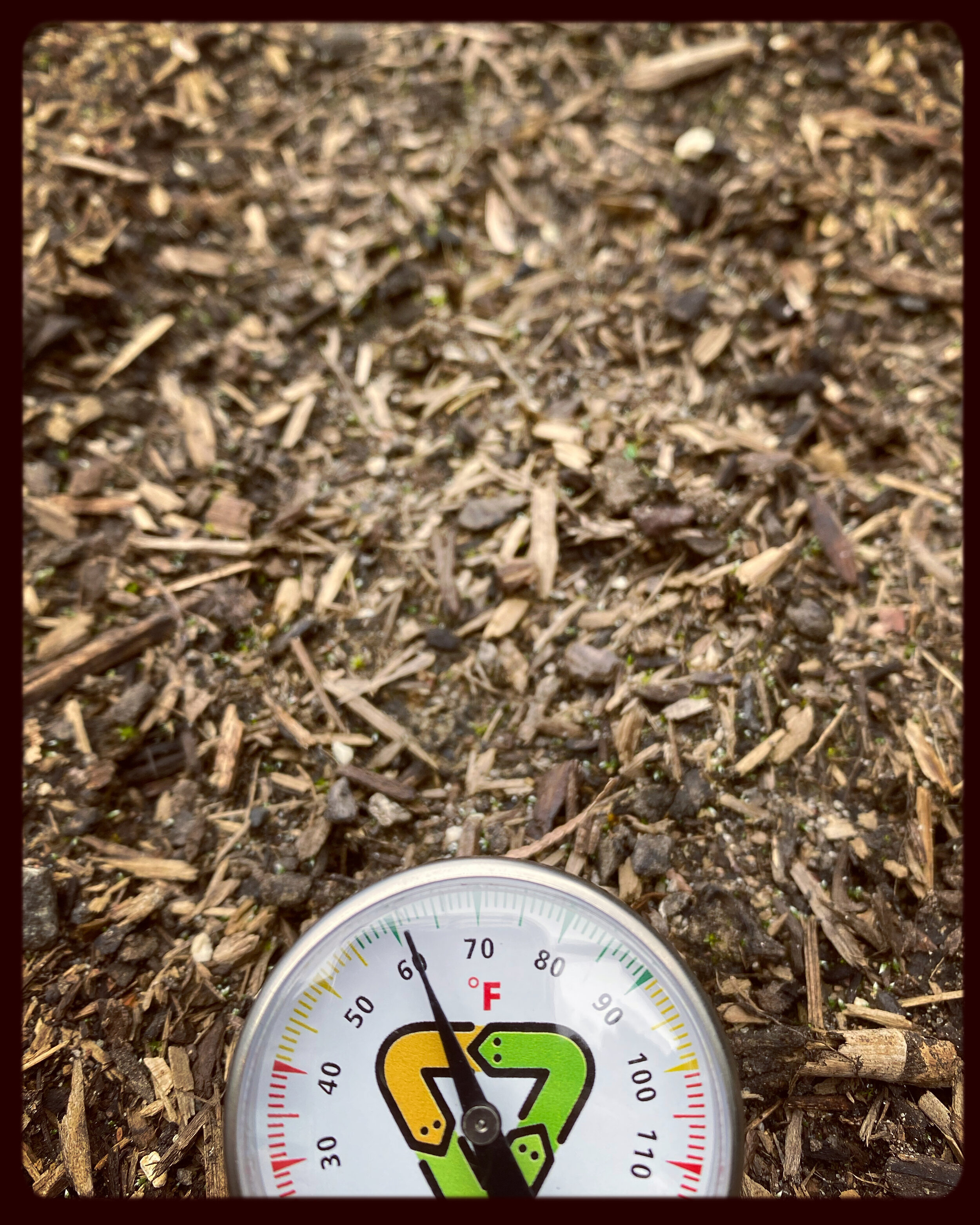where and when
Start with fertile well-drained soil, in a nice sunny spot, which receives at least 6 to 8 hours of full sunlight. Dahlia tubers are planted in the Spring after all chances of frost have passed. Ideal planting temperature is around 60 °F (16°C).
How
Before planting your tubers make a solid plan for how you are going to support your plants. Several options are available so research to find which one works best for your growing space!
Plant tubers by placing them on their side (eye facing up), 4 to 6 inches deep with 12-24 inch spacing for optimal growth. If you are unable to locate the eye don’t worry the sprouting stem will find its way up! Do not water until sprouts begin to break through the soil’s surface. Dahlia tubers can take 3 to 5 weeks before they begin peeking out of the soil’s surface, so wait patiently (and check them everyday like I do, hehe).
tending
Once plants reach around 12 inches tall, pinch/cut the top growth off just above a pair of leaves. This will encourage a strong stem with numerous side shoots, and more blooms!
I like to spoil my plants once a week during the early growing season with compost tea. I use compost tea bags, which you can order online. These ready-made compost tea bags can be tossed in 1 gallon bucket of cold water and allowed to sit overnight. I spritz the leaves and stems of my dahlia plants in the early morning of a sunny day. The plants will soak in the wonderful nutrients of the compost tea, which helps them grown into strong healthy plants, helping to boost their defense against garden pests. Once buds begin to appear on my plants, I stop spritzing and switch to watering with irrigation once a week.
pollinator support
To me the best part of growing dahlias is sharing them with the bees. It is a win- win situation. Dahlias produce nectar and pollen and while they are not as rich in nectar as some other flowers, they still attract pollinators like bees, butterflies, and hummingbirds. The nectar is primarily found in the flowers' central disc florets, which are the small, tube-like flowers in the center of each bloom. However, sadly, the double and ball varieties of dahlias do not provide ample food sources for pollinators, as their dense, multi-layered petals often block access to the nectar. This is also why it is often more difficult to get seed from the dense ball and decorative types. The compact flower structure, which is beautiful for ornamental purposes, can make pollination less efficient and drain the energy of pollinators as they tirelessly visit flowers with false ques for little to no reward.
The single, collarette, orchid, and orchette varieties are much more accessible to pollinators, offering a more generous food source. These varieties have simpler, open blooms that allow bees and other pollinators to easily reach the nectar.
If you're looking to grow breathtaking dahlias, support your pollinator ecosystem, and harvest a ton of dahlias seeds, consider planting some of the more accessible varieties!
Seed saving
Let the petals fall and the center will reveal and papery caramel colored seed head full of seeds. This is my favorite part of growing dahlias as each seed holds a new variety just waiting to be discovered!
The future
Neat Flower Farm is exploring the simple forms of dahlias to share the beauty and bounty with our pollinators.
Click on the shop link to the left and lets get your pollinator cut flower garden started!











